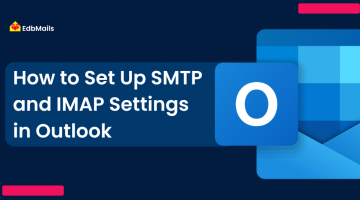Exchange server is arguably one of the most popular mailing platforms right now. It is therefore quite common that exchange server admins would find themselves in situations where they’d have to do deal with complications that arise from exchange database corruption. In this blog, we’ll see how to deal with exchange 2010 database (.edb) corruption. Before one decides to do anything about corrupt exchange databases you would need to figure out what’s wrong with the database in the first place and then decide on further action. Let’s look at the step by step procedures on how to accomplish this:
Step 1: First make use of Eseutil, the native Microsoft utility to check for database’s consistency. To accomplish this, first, check the state in which the database is by opening an elevated Exchange management shell and typing the following
Eseutil /mh “name-of-the-database”
This will help you figure out in what state the database is currently in. If it’s in ‘Dirty shutdown’ state it could need repair.
Step 2: If the database is indeed in ‘Dirty Shutdown’ state, we will need to do a ‘Soft recovery’. Soft recovery is essentially a replay of transaction logs. Use the following command for soft recovery:
Eseutil /r “log-file-to-be-replayed”
For example, if I want to replay the log file ‘E01’, the command would be:
Eseutil /r E01
Note: The above commands should be run from the folder that contains log files.
Step 3: In case the database is still in the same state as before, that is, ‘Dirty shutdown state’ even after soft recovery then it means that we have to try and perform a hard recovery. For this, use:
Eseutil /p “name-of-the-database”
Note that hard recovery could result in loss of information as it replaces bad sectors with blank pages hence it becomes imperative to defragment the database after a hard recovery.
Use the below-mentioned command to defragment the database.
Eseutil /d “name-of-the-database”
Note that defragmenting database may result in a reduction of its physical size, but no information will be lost.
Step 4: The final step would be to use New-MailboxRepairRequest cmdlet to fix Search Folder, Aggregate Counts, Folder View and Provisioned Folder corruption. When you are running New- MailboxRepairRequest against a database, only the mailbox being repaired will get disrupted. The cmdlet can be invoked as follows:
New-MailboxRepairRequest -Database “name-of-the-database” – CorruptionType SearchFolder,AggregateCounts,FolderView,ProvisionedFolder
You can use Get-MailboxRepairRequest to check about currently running mailbox repair requests. Also, you can use Eseutil /mh again to see if the database is in clean shutdown state.
Wrapping up
We’ve seen in detail how to deal with exchange 2010 database corruption and recover the database from dirty shutdown state. However, if you’d like a faster and more reliable alternative it is better to try a professional exchange recovery tool like EdbMails which uses its advanced deep scanning techniques to repair even the most corrupted database quickly. Being a forensic recovery tool, EdbMails can repair inaccessible or unmountable offline exchange databases whatever their shutdown state is, without actually causing any harm to the information within the database itself. EdbMails also supports direct migration of exchange databases to Office 365 and Live exchange server making it a one-stop solution for all exchange server recovery needs.



